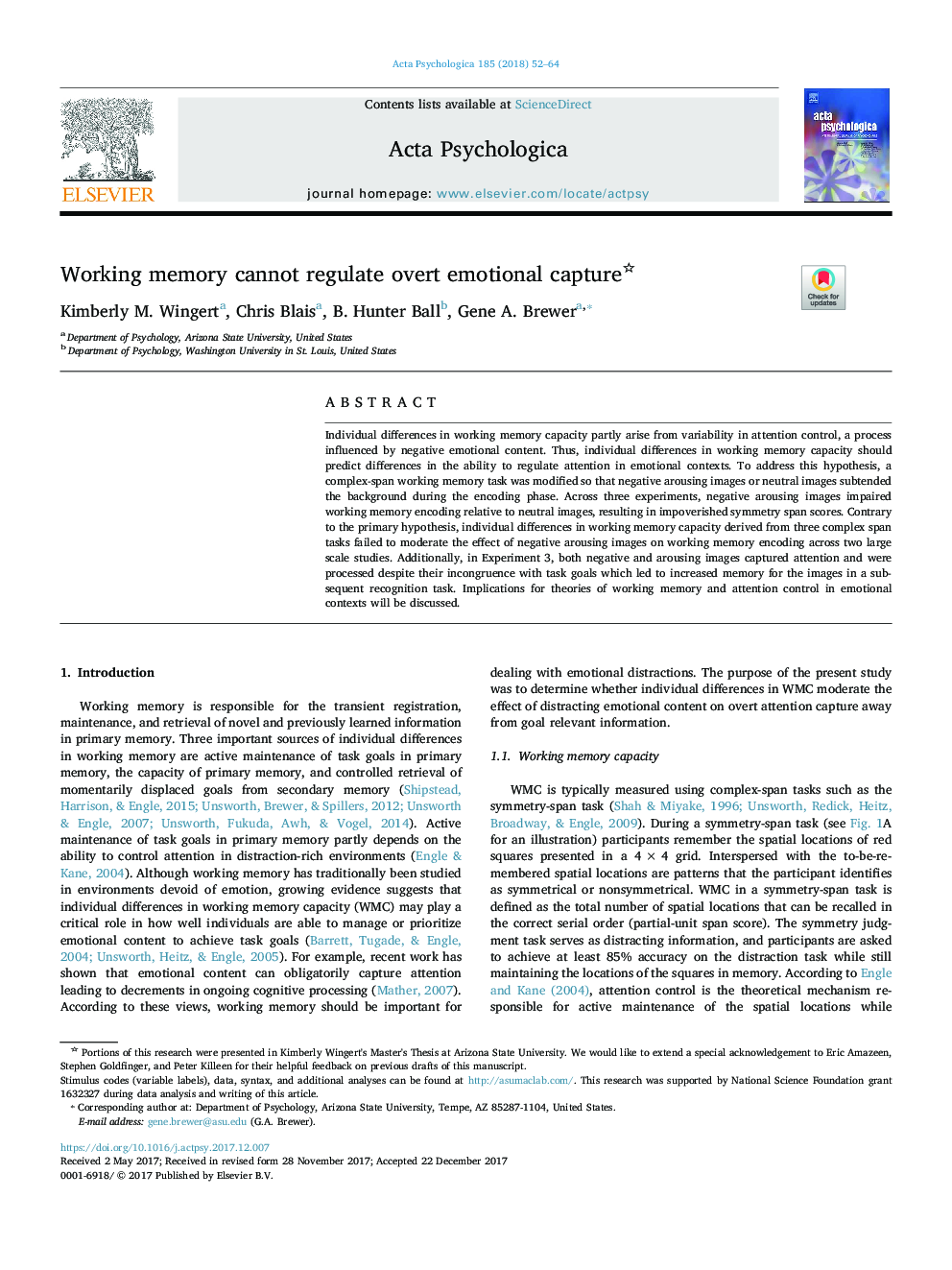| Article ID | Journal | Published Year | Pages | File Type |
|---|---|---|---|---|
| 7276713 | Acta Psychologica | 2018 | 13 Pages |
Abstract
Individual differences in working memory capacity partly arise from variability in attention control, a process influenced by negative emotional content. Thus, individual differences in working memory capacity should predict differences in the ability to regulate attention in emotional contexts. To address this hypothesis, a complex-span working memory task was modified so that negative arousing images or neutral images subtended the background during the encoding phase. Across three experiments, negative arousing images impaired working memory encoding relative to neutral images, resulting in impoverished symmetry span scores. Contrary to the primary hypothesis, individual differences in working memory capacity derived from three complex span tasks failed to moderate the effect of negative arousing images on working memory encoding across two large scale studies. Additionally, in Experiment 3, both negative and arousing images captured attention and were processed despite their incongruence with task goals which led to increased memory for the images in a subsequent recognition task. Implications for theories of working memory and attention control in emotional contexts will be discussed.
Related Topics
Life Sciences
Neuroscience
Cognitive Neuroscience
Authors
Kimberly M. Wingert, Chris Blais, B. Hunter Ball, Gene A. Brewer,
